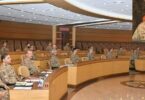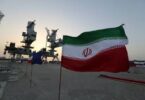At last the federal government has announced a National Narrative, ” Paigham-e-Pakistan” to seriously address the most burning issue of terrorism and eventually eradicate this scourge which has claimed 80 thousand lives. It is based on 22 points Fatwa inked by 1800 hundred religious scholars of all schools of thoughts hailing from across the country. It rejects extremism, sectarian hatred and use of force to impose Shariah as rebellion against the state. It declares Jihad as the prerogative of state and calls suicide attack “haram”in the light of Holy Quran and Sunnah. It also states that core objective of all educational institutions in Pakistan is enlightenment, schooling and character building. These institutions must not impart hostile military education, training, hatered, extremism and violence. It also points out that sectarian hatred, armed sectarian conflict and imposing one ideology on others by force is a clear violation of the injunctions of Shariah and are a “disorder “on the earth.
The legacy of intolerance and extremism dates back to mid 70s but the government and the state did not bother to nip the evil in the bud. The religious polemics and difference of opinion between various schools of thought was hitherto confined to intellectual debates and enlightened discussions. The successive governments turned a deaf year and blind eye to the use of loud speakers in places of worship and at religious gatherings for delivering hate speeches. Likewise, strict action was not taken against the publication of material spreading sectarian hatred between the different sects and followers of different schools of thoughts. The violent clash between the Deobandisand and Barelvis during Eid Milad-u-Nabi (Sm) celebration procession in Jani Burira village of Sindhs’Khairpur distri on 30 th November, 2017 is clear manifestation of deep rooted intolerance and extremism in our society. At least three people died and nine injured in that clash. The proxy war between two Muslim countries on the soil of Pakistan has also contributed to sectarian strife in which a large number of innocent people perished.
The private Jihad culture is the spill over effect of occupation of Afghanistan first by Soviet forces and then by American forces. Again the successive governments did not realize that banned outfits are establishing safe heavens in FATA and sleepers cells in Southern Punjab and interior Sindh. The present PML-N government was not supportive of launching “Operation Zarb-e-Azab”and was insisting on negations with the banned Tehrik-i-Taliban Pakistan and other domestic and foreign militant groups. After the terrorist attack on Army Public School Peshawar, 20 points National Action Plan (NAP) was approved, but only three points were half heartedly implemented. The National Narrative envisaged in NAP is the most important point and this narrative has been prepared after a lapse of three years. The National Counter Terrorism Authority (NACTA) has not been made fully functional because of political expediencies. Apart from paucity of funds its capacity for intelligence gathering is also limited. These issues which hamper the performance of this important organization are not sincerely addressed. Comprehensive legislations for the much needed law reforms are deliberately ignored. The Chief Justice of Pakistan Justice Mian Saqib Nisar has drawn the attention of the government to lacunae in the CRPC, PPC and other laws of justice system. It remains to be seen how far our civilian leadership shows seriousness and determination to promote and implement the National Narrative, “Paigham-e-Haq”to steer the country out of the deep quagmire of intolerance, extremism and root out the scourge of terrorism.






